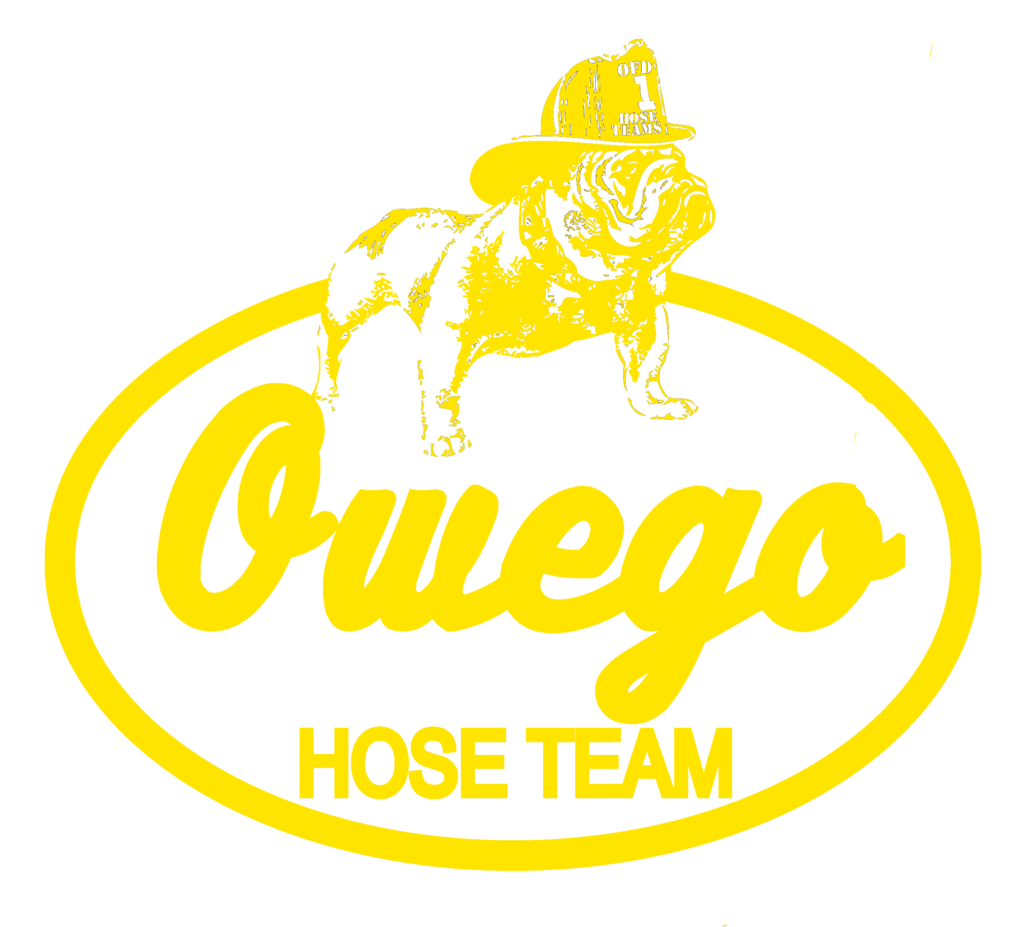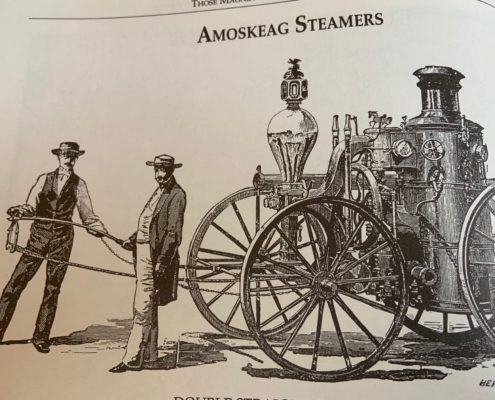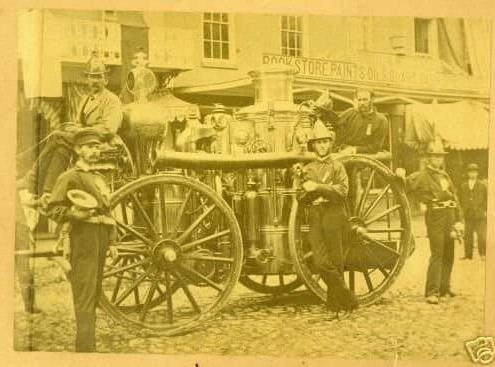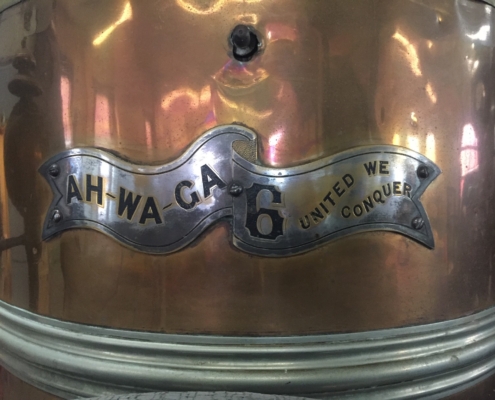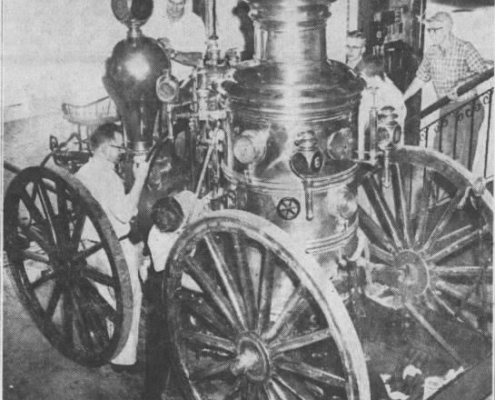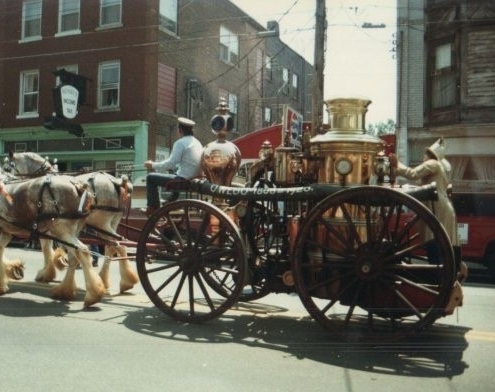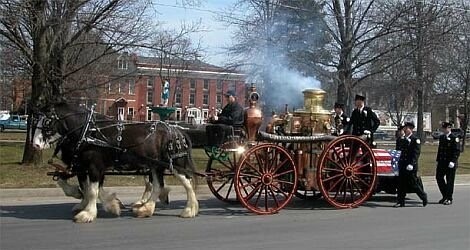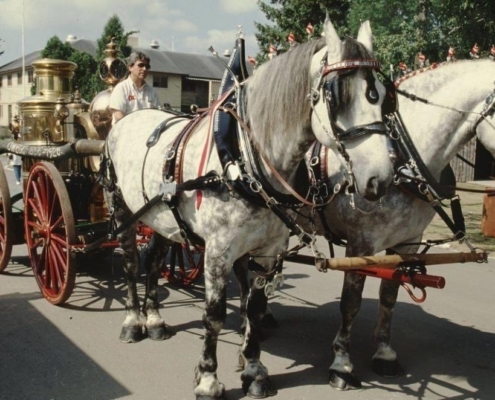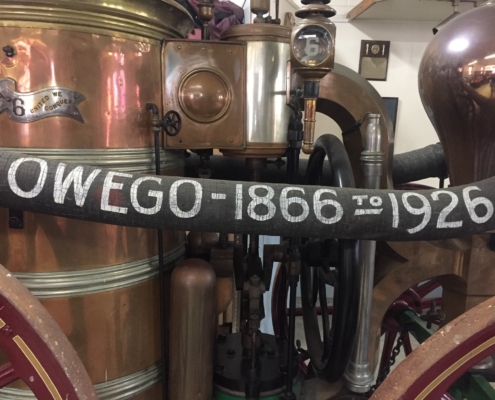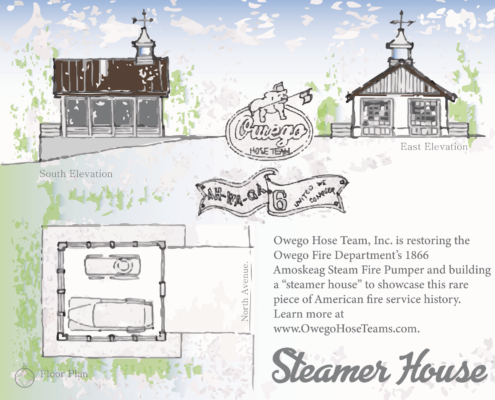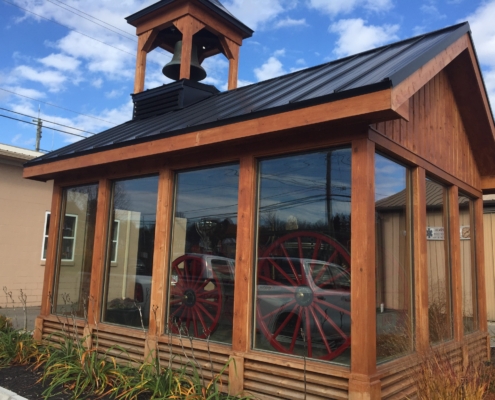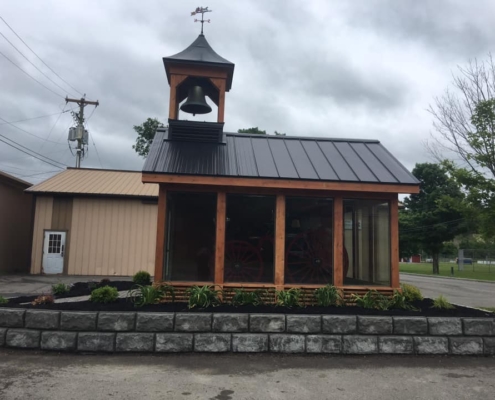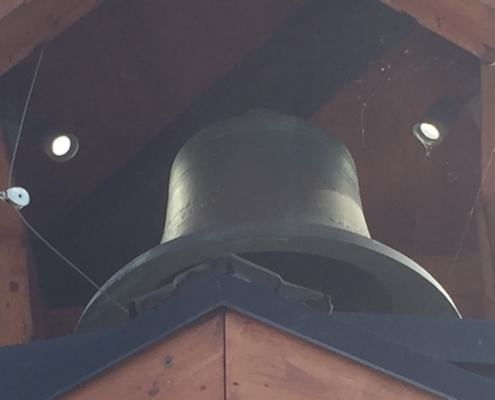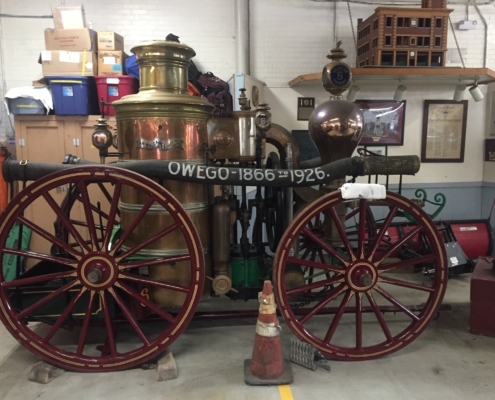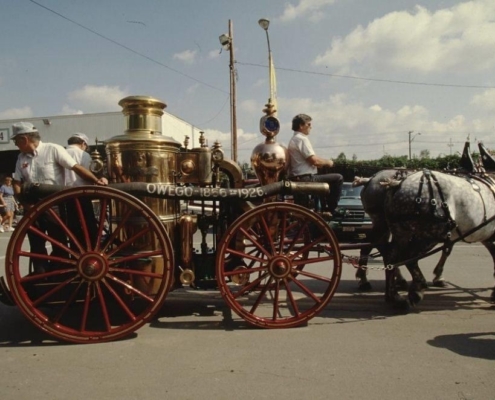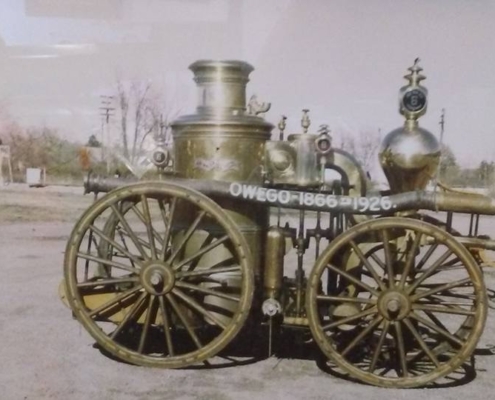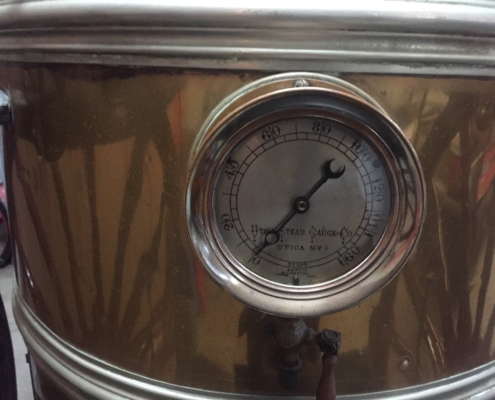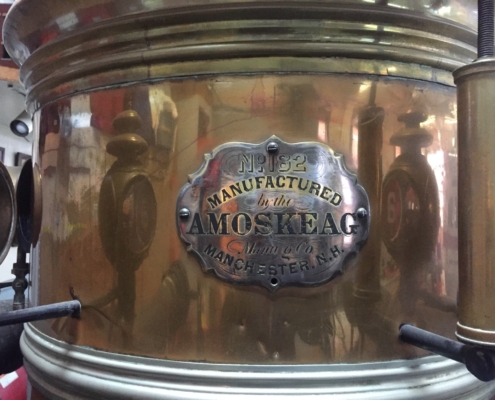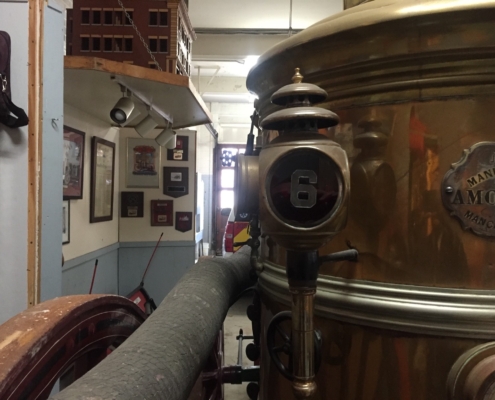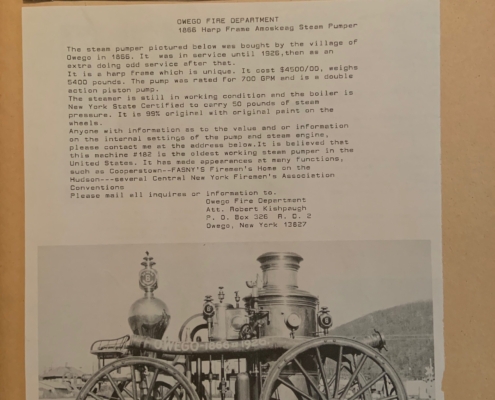Project Description
The 153-year-old Owego Fire Department Amoskeag Steam Fire Engine, known as the “steamer,” has not been operational since the late 1980s. In 1987 the steamer was the oldest licensed operating steam fire engine in the nation. Deterioration and “thinning” of the steamer’s boiler has rendered it unsafe for operation at present. The hose team is working to restore the steamer making it operational again and build an appropriate showroom (steamer house) for this rare piece of American fire service history presenting historical, educational, and training opportunities.
Steamer Restoration
Once described as the “Pride of the Owego Fire Department,” the steamer was purchased for $4,500 in 1865 by the Village of Owego with $1,000 worth of hose a significant investment at the time. Manufactured by Amoskeag Manufacturing Company of Manchester, New Hampshire the 4,500-pound piece is rare in that its frame is designed in the shape of a harp. The steamer served the village with fire suppression from 1866-1926. The steamer is owned by the Owego Fire Department and its members. The steamer is believed to be “Size 4” with 350 gpm capacity, 4,000 lbs, with serial #182. The value today of such a unique piece of fire service history is priceless. Jim Mead, lifetime member of the Owego Fire Department and owner of Early Owego Antiques, is the area expert on steam powered machinery and has worked/operated the steamer since the 1970s. Jim has again stepped forward to help with this project.
Steamer House
In addition to restoring the steamer, we are planning to build a “steamer house” similar to one located in Marathon, NY to showcase the piece. Constructed of cedar wood frame and glass solarium walls for 360 degree viewing with steeple supporting an antique fire bell, the building would ideally be located on North Avenue near Central Fire Station. This showroom would also house OFD’s 1939 Sanford hose truck.
Benefits to Tioga County
Owego enjoys a vast and well-known history in the fire service. One must look no further than the restored Baker Fireman’s Fountain or soon to be restored Central Fire Station, two of the most photographed icons in the village. The restored steamer and accompanying steamer house will complement this distinction while adding to the village’s tourist attractions, help stabilize the North Ave. business district, and enhance downtown Owego’s living and quality of life.
With your help, the historic Owego steamer will be restored reclaiming its title as, “oldest licensed operating steam pumper in the United States.” It will also have an appropriate showcase location in the steamer house drawing tourists to the downtown business district continuing to improve the North Avenue corridor.
Owego firefighters will be aided in training on pump operations with the working steamer back in service.
Steamer History
Invented out of desperation in the early 1850’s when volunteer firemen with hand operated engines could not control fires, steam fire engines soon revolutionized firefighting throughout the world. One steamer could exceed the firefighting capacity of several hand engines with 150 firemen. The Uncle Joe Ross was the first successful steam fire engine manufactured for the Cincinnati, Ohio Fire Department in 1852 by Latta & Shawk. Others had been constructed or designed previously to include George Braithwaite in London, England in 1829 and P.R. Hodge in New York City in 1840. The sixty years from 1853 to 1913 marked the heyday of steam fire engine manufacturing in the United States, with only a few built in 1914-1916 and the final one built in 1917. Post 1917 cities and towns converted from steamers to motorized engines powered by gasoline. During then six decades of steam fire engine manufacture, more than 80 firms turned out roughly 5,000 of them, of which 80% were built by eight manufacturers including Amoskeag that 853 the third most of any manufacturer.
The steamer operates when the fire in the boiler heats the water in or around the boiler tubes or coils, turning it into steam to power the piston pump. The pear shaped air chamber evens out the pulsations of the piston to produce an even flow of water through the fire hose and out the nozzle onto the fire.
Of the approximately 5,000 steam fire engines built between 1852 and 1917 less than 400 are known to survive. The biggest exodus of the once proud steam fire engines occurred during World War II scrap drives. Hundreds of steamers were donated to the war effort.
